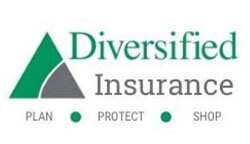Benefits of Life Insurance: Beyond Just Death Benefits
Table of Contents
Benefits of Life Insurance: Beyond Just Death Benefits
Americans carry an average debt of $104,215, yet almost half of adults don’t have life insurance. Many people believe life insurance costs too much. The reality shows a different picture – an average policy costs around $200 yearly, making it much more affordable than most assume.
Life insurance offers benefits that go way beyond the reach and influence of simple death benefits. Families can use the tax-free payouts to maintain their lifestyle, which matters significantly since average households spend $72,967 each year. The coverage helps with final expenses too, including burial costs that average $7,848.
This article will show how life insurance works as a flexible financial tool at every stage of life. You’ll find advantages that range from protecting young families to funding education, where private college expenses can hit $43,350 yearly. The coverage creates a lasting impact through charitable giving and offers a detailed spectrum of benefits to policyholders.
Life Insurance Benefits in Early Adulthood
Most young adults don’t think much about life insurance. They usually push it off until they’re older. But getting started early gives you a chance to build strong money habits with better rates. A newer study shows that only 34% of Gen Z and 45% of millennials have life insurance coverage.
Starting your financial foundation
Your early 20s and 30s are the best time to start building financial security. Life insurance has many benefits if you have no dependents yet. The policy will protect your cosigners and family from paying off your student loans, mortgages, or other debts. Your private student loans will still need to be paid by cosigners even after death.
Permanent life insurance can be used to do more than just pay death benefits – it can build cash value over time that you can use later. This money becomes an asset that can help buy a home or add to retirement income. Young professionals love this two-way benefit as they build their financial portfolios.
Protecting new family commitments
Life insurance becomes vital as you start a family. Your policy protects anyone who depends on your income – spouses, partners, or children. On top of that, it covers funeral costs, which can be expensive.
Getting coverage before big life changes like marriage or having kids will give your loved ones financial stability whatever happens. The money replaces lost income, pays the mortgage, and funds education. Stay-at-home parents need coverage too since much of their work would need paid services if they passed away.
Locking in lower premiums
The best reason to get life insurance early is the money you’ll potentially save. Rates go up about 8% each year you wait. Then the difference between buying in your 20s versus 40s can save you thousands over time.
Your health is a vital factor in setting rates. Young adults usually have better health and pay lower premiums. Once you lock in those rates, they stay the same for the whole term. Getting coverage while young and healthy protects your future insurability whatever health issues come up later.
Maximizing Benefits During Family Years
Life insurance becomes incredibly valuable during the family years. This stage brings expanded financial responsibilities that create a greater need for complete coverage. Studies show that all but one of these American households would struggle financially within six months if they lost their main wage earner.
Income replacement for growing families
Families with children need life insurance to help survivors maintain their lifestyle. The death benefit can replace years of lost income and help families pay for everyday expenses like mortgage payments, utilities, and groceries. This protection isn’t just for breadwinners – stay-at-home parents need coverage too. The services they provide would cost a lot to replace through hired help.
Financial experts suggest getting coverage equal to at least ten times your annual income to create a good safety net. This amount helps families:
- Pay for daily essentials and household expenses
- Continue saving for long-term goals
- Keep their current lifestyle without big changes
Education funding protection
Life insurance helps protect education funding goals. Public four-year universities now cost nearly $11,000 per year, so many parents prioritize securing their children’s educational future.
A well-laid-out policy protects education plans even after the unexpected loss of a parent. Some permanent life insurance policies build cash value that supports college funding strategies. The cash value usually doesn’t count in financial aid calculations, which could help improve eligibility for assistance.
Mortgage and debt coverage
Mortgage payments are often a family’s biggest financial commitment. Life insurance creates financial stability by making sure the home loan can be paid if something happens to the policyholder.
This protection covers more than just mortgage payments. The death benefit helps survivors pay off debts of all types, including car loans and credit cards. This prevents financial stress that could affect their future. Many families feel more at peace knowing their home and financial obligations are secure during these important family-building years.
Life insurance works as a complete financial safety net during these vital family years. It goes way beyond the reach and influence of just replacing income – it secures a family’s overall financial future.
Mid-Life Advantages of Life Insurance
Life insurance transforms from simple protection into a sophisticated financial tool with multiple applications when people reach their 40s and 50s. Middle age brings complex financial situations and new ways to utilize insurance benefits beyond traditional coverage.
Building cash value for opportunities
The cash value in permanent life insurance policies grows over time and creates a versatile financial resource. Tax-deferred growth allows faster accumulation because annual taxes don’t reduce it. Many policies need several years to build substantial value, which makes mid-life the perfect time to utilize this asset.
Cash value provides remarkable flexibility. Policy owners can withdraw funds to pay for major expenses like home improvements or college tuition. Borrowing against the policy offers tax advantages over direct withdrawals. Policy loans don’t need credit checks or application processes, unlike traditional loans.
Business protection strategies
Business owners can use life insurance as a powerful planning tool. Companies protect themselves against financial losses from losing their core team through key person insurance. Life insurance-funded buy-sell agreements help remaining partners purchase a deceased owner’s share and ensure business continuity.
Other valuable business applications include:
- Executive bonus plans that provide supplemental retirement income
- Deferred compensation arrangements for higher-paid employees
- Funding for business loans and mortgages
Tax-advantaged wealth accumulation
Tax advantages from permanent life insurance become most important during mid-life. Cash value grows without annual income taxes. Properly structured withdrawals from the policy basis stay tax-free.
Policy loans create another tax-efficient strategy. Loans against cash value avoid taxation as long as the policy stays active, unlike traditional withdrawals. This creates opportunities to build wealth with tax advantages beyond traditional retirement accounts like 401(k)s or IRAs.
Permanent life insurance becomes more valuable during peak earning years when tax burdens reach their highest levels.
Retirement and Estate Planning Benefits
Life insurance becomes a powerful estate planning tool as you enter your golden years. The benefits extend way beyond your lifetime and provide financial security while you build a lasting legacy.
Supplemental retirement income
Permanent life insurance policies create a cash value that helps supplement your retirement income. Your money grows tax-deferred and can accumulate substantially over time. You can access these funds through tax-free withdrawals up to the amount you paid in premiums or through policy loans.
Life insurance retirement plans (LIRPs) stand out from traditional retirement accounts. These plans don’t have IRS contribution limits, which makes them ideal if you have maxed out your 401(k) or IRA contributions. The funds also provide stability during market downturns, so you won’t need to sell investments at lower prices.
Legacy creation
Life insurance guarantees a legacy for your loved ones. Your policy lets you leave specific amounts to heirs or charities and ensures you meet financial goals whatever happens to other assets. This becomes valuable when you need to transfer wealth tied up in businesses, real estate, or farmland that’s hard to divide among heirs.
The proceeds from life insurance typically go to beneficiaries tax-free, which makes wealth transfer efficient. Many people name their children or grandchildren as beneficiaries of their insurance while their spouses receive retirement accounts. This creates a complete estate distribution strategy.
Estate tax management
Life insurance plays a vital role in handling estate tax obligations. Larger estates benefit from immediate cash to pay estate taxes without forcing heirs to sell valuable assets. The benefits include:
- Preventing the sale of sentimental or income-producing assets
- Ensuring business continuity during ownership transitions
- Equalizing inheritances among multiple heirs
Irrevocable Life Insurance Trusts (ILITs) boost tax advantages by keeping policy proceeds outside the taxable estate. A properly structured death benefit passes to trust beneficiaries free from federal estate taxes.
Charitable giving strategies
Life insurance provides multiple ways to support charitable giving. You can name a charity as a beneficiary to create a substantial gift without affecting your current finances. Another option lets you transfer policy ownership to a charitable organization for tax deductions on both current value and future premium payments.
Charitable giving riders offer flexibility. You can direct a percentage of the death benefit to organizations while keeping family benefits intact. This approach can double your charitable impact – a $100,000 investment in premiums could deliver twice that amount or more to your chosen cause.
Conclusion
Life insurance serves as a powerful financial tool that adds value at every stage of life. Getting started early helps you lock in lower premiums and build a strong financial foundation. Your family’s education goals and mortgage payments stay protected during the family years, which helps your loved ones keep their lifestyle. The middle years open up new possibilities through cash value growth and ways to protect your business. Tax benefits become especially valuable when you reach your peak earning years and need alternatives to traditional retirement accounts.
Your estate planning options expand as policies mature. Life insurance lets you transfer wealth and make charitable gifts without heavy tax implications. Smart policy structuring creates a lasting legacy that protects your family’s assets for generations. Life insurance does more than just provide death benefits. The right policy matches your needs at each life stage and helps build wealth while protecting what matters most. This makes it a vital part of any smart financial plan for families and businesses.




